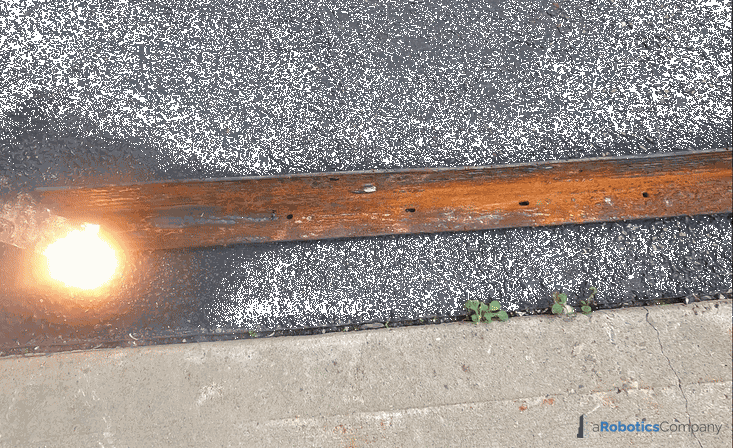
Laser Ablation
How Laser Ablation Works
Laser ablation uses a focused laser beam to heat a small area of a material until it breaks apart and turns into vapor or tiny particles. The energy from the laser is absorbed quickly, causing the surface layer to melt, vaporize, or be ejected. It's often used for precise cutting, cleaning, or shaping of materials without physical contact.
Key Features
• Precision Removal: Uses advanced laser technology to target and remove paint, rust, and coatings without affecting the underlying material or inadvertently affecting surrounding material.
• Versatile Applications: Ability to remove rust and paint from most surfaces including ship hulls and metal roofs.
• Remote Operation: Can be controlled from a distance, enabling reach in challenging spaces and enhanced safety.
• Modular Design: Easily swapped with other aRC instruments like impact testing, radar scanning, and infrared.
• Efficient Cleaning: Covers a broad area quickly, minimizing downtime and enhancing productivity.
Technical Specifications
• Laser Source Power: 2000W.
• Scan Width: 160 ± 10mm.
• Laser Wavelength: 1080 ± 10nm.
• Power Configuration: AC220V ± 10% Single Phase.
• Cleaning Efficiency: 15 - 45m^2/h.
• Cooling Method: Water Cooling (Distilled, Deionized, or Pure).
• Total Power: 6,000 - 10,000W (Chiller included).
• Operating Environment: Humidity ≤ 70%, Temp. 0°C ~ 35°C.
Applications
• Refurbishment: Efficiently remove old paint or coatings in preparation for reapplication.
• Maintenance: Address and remove corrosion or rust buildup quickly without sandblasting or grinding.
• Restorative Operations: Return older assets to their original appearance and condition; extend lifespan.
• Repair Preparations: Clean surfaces prior to welding or other operations.